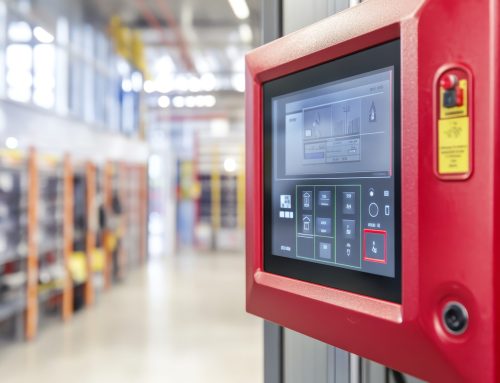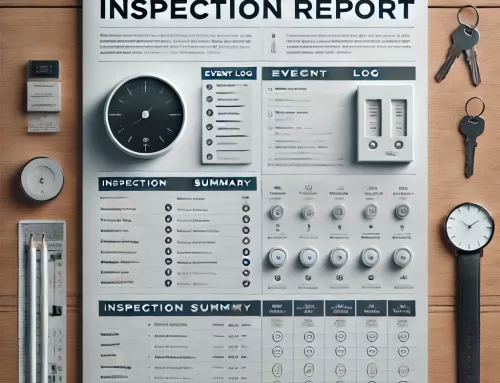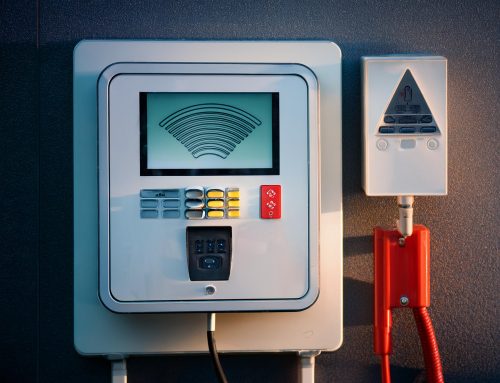Smoke detectors provide the fastest response to fire because smoke typically precedes heat in the development of most fires. Heat detectors respond more slowly than smoke detectors, particularly in the incipient stages of a fire when heat buildup is minimal since they detect heat rather than smoke. It’s important to note, however, that although the activation of heat detectors lags smoke detectors in a smoldering fire, heat detectors may activate more quickly in fast-burning fires when there’s a rapid rise in heat.
These differences in response times don’t necessarily mean that smoke detectors are “better” than heat detectors. Rather, they are different in functionality and application. To get the most effective protection for your facility, it’s important to choose fire alarm sensors that match the specific hazards and environment of your business.
Heat Detectors: Reliable, but Slower
Heat detectors respond to changes in temperature and are generally less sensitive than smoke detectors. This means that they can take longer to activate in certain situations. However, this delay can also make them more reliable in areas where dust, steam, or other air-borne particulates could cause false alarms.
The two main types of heat detectors are fixed temperature detectors and rate-of-rise detectors. Fixed detectors activate when the air temperature reaches a predetermined temperature point whereas rate-of-rise detectors activate when the air temperature rises to a level beyond a predetermined temperature point, or when the temperature rapidly increases.
Common applications for heat detectors include industrial facilities, mechanical rooms, garages, or commercial kitchens.
Smoke Detectors: Faster, but Sensitive
Smoke detectors detect airborne particles that are released during combustion. They are designed smoke to activate in the early stages of a fire, even before you see flames. These detectors tend to be faster at responding to fire, but the high sensitivity of smoke detectors can sometimes lead to false alarms if there’s an area with a lot of dust, aerosols, or other air borne particles.
The two most common types of smoke detectors are ionization and photoelectric detectors. The main differences in these two are methods of detection and response times. Ionization detectors are more responsive to quick, hot fires by detecting changes in electrical current caused by smoke disrupting ionized air between charged plates. Photoelectric detectors are more effective at detecting slow starting, smoldering fires, by using a light beam that, when scattered by smoke in the sensor chamber, activates the alarm.
Additionally, there are dual-sensor smoke detectors that combine ionization and photelectric sensors that detect both smoldering fires and fast flames to improve detection and reliability across different types of fire.
Common applications for smoke detectors include highly populated areas such as offices, retail stores, schools, and healthcare facilities.
Choosing the Right Detector for Your Environment
The best fire detection solution depends on the specific characteristics and needs of your environment and the type of hazards you’re trying to protect. A trusted fire protection company should help you determine the best detector for your individual needs based on these factors. Some examples of how your environment affects the type of detection include:
- Warehouses and storage areas: Depending on what is stored, ventilation conditions, and overall layout, these areas would benefit from a combination of both heat and smoke detectors.
- Mechanical or boiler rooms: Due to the presence of steam and high ambient temperatures, heat detectors are ideal in these areas as they are more sensitive to changes in temperature.
- Commercial kitchens: Heat detectors are less prone to false alarm caused by steam and other cooking fumes present in commercial kitchens, making them the best choice for detecting fire in this environment.
- Offices and retail spaces: Since there’s typically no airborne dust or debris to affect detection accuracy, smoke detectors are recommended for early warning and fast evacuation in these environments.
- Healthcare or education facilities: Smoke detectors provide early warnings of fires in healthcare and educational facilities, allowing for faster evacuation of those who may need additional assistance evacuating the building.
Integrating Both for Comprehensive Coverage
Most commercial fire alarm systems today incorporate both smoke and heat detection technologies to improve safety and reduce the risk of false alarms. There are two main types of integrated detectors: combination smoke/heat detectors and multi-sensor or multi-criteria detectors. Combination detectors are dual function (meaning they detect both heat and smoke) whereas multi-criteria detectors can combine smoke and heat detection along with Carbon Monoxide, gas, or even light detection.
Combination vs. Multi-Sensor:
- Combination smoke and heat detectors provide fast, reliable fire detection by sensing both smoke particles and high heat. These dual-function devices trigger alarms whether the system is armed or disarmed. Combination detectors come in both wireless and hardwired versions.
- Multi-criteria/multi-sensor detectors detect heat, smoke, CO, and other factors using multiple sensors to detect a wide range of fire conditions with enhanced accuracy. Built-in advanced algorithms analyze multiple inputs for greater reliably and more rapid response. These detectors can identify key elements of a fire while reducing risk of false alarms.
Fire Systems, Inc.
When comparing the response times between heat and smoke detectors, smoke detectors notably offer faster response times, particularly in the beginning stages of a fire. This isn’t to say that heat detectors are ineffective or slow but rather shine in other applications. Hire a fire protection company that understands how each detector works and where it performs best. These professionals can design a fire alarm system that delivers both early warning and dependable performance for your specific needs.
The optimal fire detection strategy for your business will likely involve a combination of both technologies. A well-trained fire protection professional can strategically place heat and/or smoke detectors based on each area’s function and fire risk. At Fire Systems, Inc., after considering each clients’ needs, we recommend a code-compliant and reliable fire alarm system that provides the highest level of fire safety possible. We then guide you from the initial design and installation processes all the way through the fire alarm inspections to ensure your systems are always fully functioning and code-compliant. Call us today at 770-333-7979 or visit our website for more information. We look forward to working with you.







